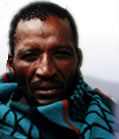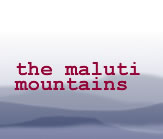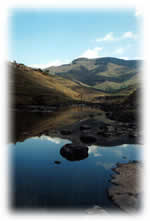 |
 |
||
 |
|||
|
RELATED THEMES agriculture development environmental knowledge health livestock migration resettlement OTHER LOCAL THEMES BACKGROUND |
environment
The valley is sheltered; even the winter snow doesn't settle for long, they say. Another example given of the beneficence of the local environment is the quality of the grazing. Unlike much of the lowlands, dominated by a grass called molula, the Mohale area is home to a variety of grasses that are particularly good for grazing. Residents specify a variety called letsiri that apparently does not wear out the teeth of cattle. There are some references to wildlife: rabbits, squirrels and polecats are still killed but antelopes are no longer seen, having moved further into the mountains because of the growth in population and increased hunting. Most animals are hunted as food, while the polecat also has medicinal properties. Other wild animals mentioned are servals, hares, jackals, bucks and meercats. Poor rainfall is a frequently voiced complaint, some narrators maintaining that drought has become more common than it was in the past. quotes about environment"Here at Molika-liko [snow] does not take even two days [to disappear]. This place... it is like it is not a place of the mountains. The snow of here wakes up having settled here. and you would not even see what is what, but by this time (around 10am). here in the valley it is no longer there; it would remain on the mountainsides there. It will happen that when the sun sets. or the day following that one, there is already nothing on the mountainsides here and we are already just herding well." "[Wild animals] are of great benefit to us and we protect them a lot, so that they should not be killed - the ones like bucks, steenboks, because they are the ones that are here. Springboks I no longer see. Now these steenboks and these bucks - they are the ones that we protect a lot so that they should not be shot at. Just like a lot of people have bought guns from the government. They should leave them alone so that we can show the children, so that they should know them and the hares. Now sometimes they try and set dogs on them but we are still trying to show the mistake of doing so." |
|
 The relationship of the Molika-liko community with their environment permeates every aspect of their lives and reflects their need to make it work for them; to nourish it so that it can continue to nourish them. Although this entails hard physical labour, narrators emphasise that the naturalness of this relationship gives them a sense of freedom:
The relationship of the Molika-liko community with their environment permeates every aspect of their lives and reflects their need to make it work for them; to nourish it so that it can continue to nourish them. Although this entails hard physical labour, narrators emphasise that the naturalness of this relationship gives them a sense of freedom: